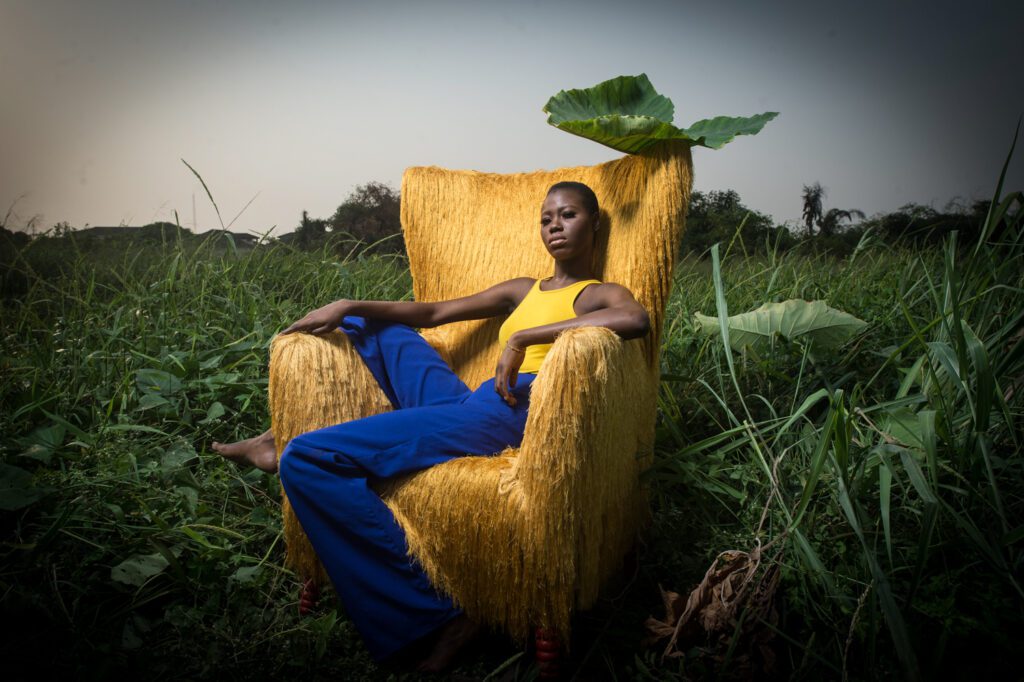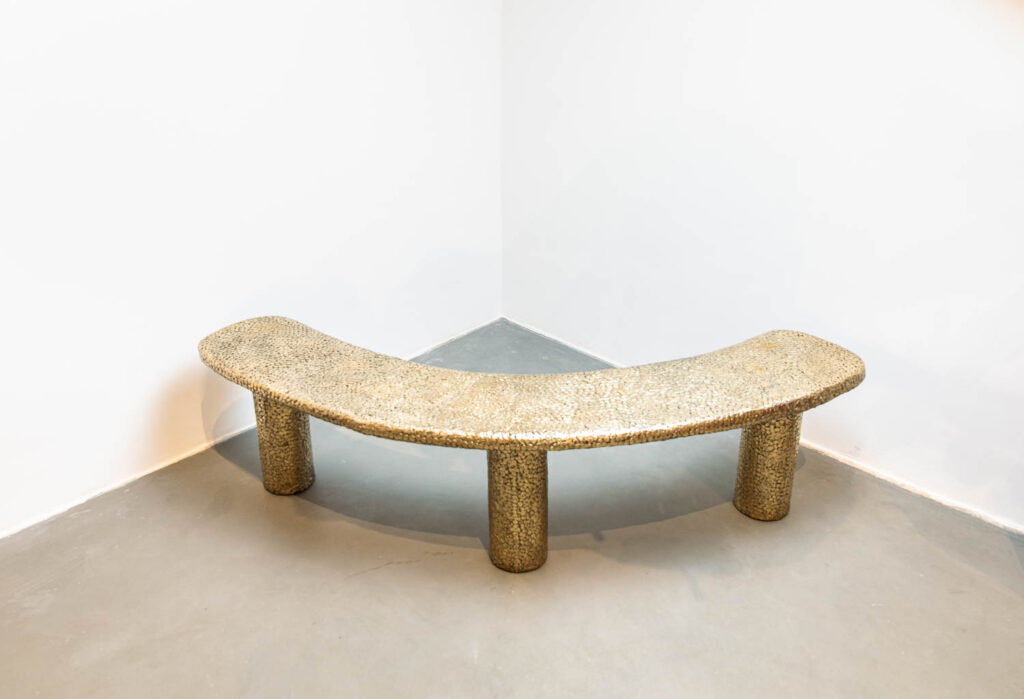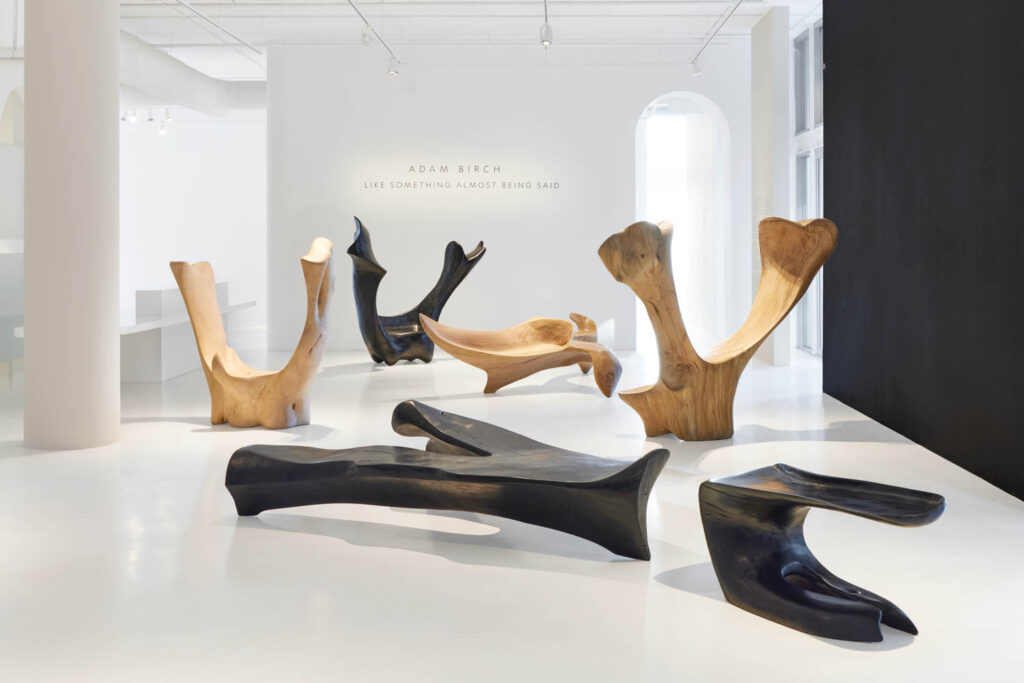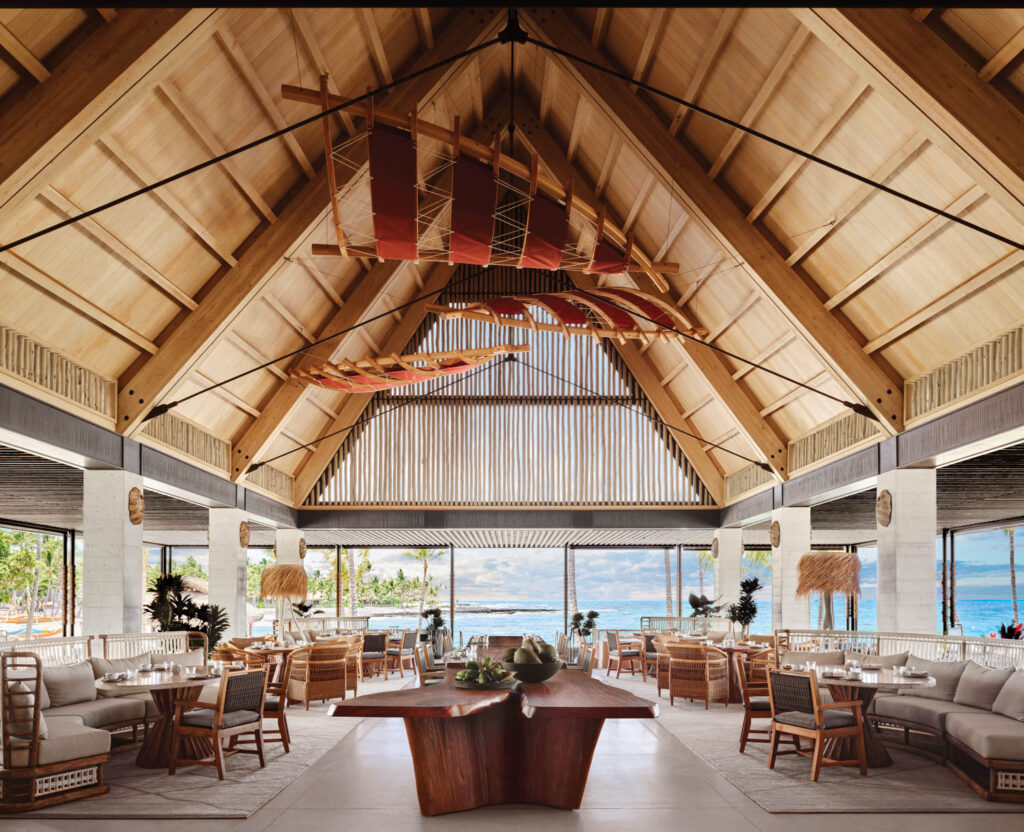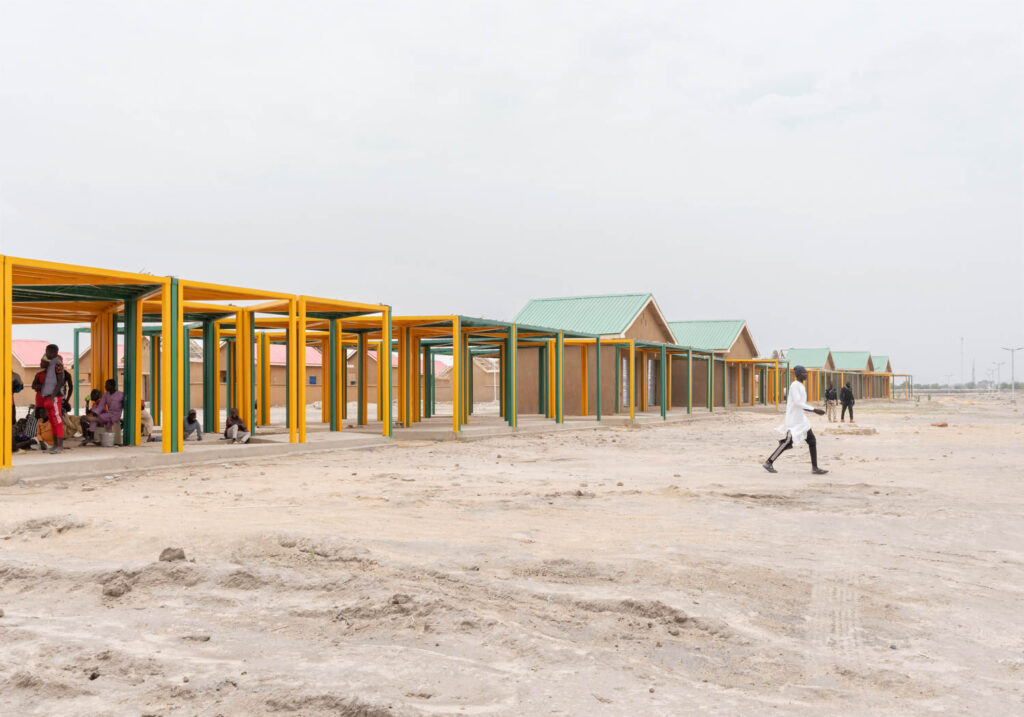
10 Questions With… Tosin Oshinowo
Tosin Oshinowo, a distinguished architect from Nigeria who melds her design philosophy with spontaneity, speaks in a bold and confident tone. Her voice reflects her mastery in the field and lifelong passion for design.
Oshinowo always wanted to be an architect. At 12, she was able to read floor designs and sketched the terrazzo floor of her father’s house. Tapping into such enthusiasm, she left Nigeria to study architecture in London where she earned four degrees. In 2012, she founded her own architectural firm, CM Design Atelier, and started a lifestyle brand, Ile-ila.
Oshinowo’s design aesthetic is simple and follows the trajectory of culture and identity. “One has to take into context their culture when designing spaces and that’s very much what we’ve been able to also do,” she says. “This will probably come across more in residential or private dwelling, but it can also come across in institutional or state buildings. The fact is culture has a big role.”
As an architect, she introduced her own design ethos, which she refers as Afro Minimalism, a concept she says references modernism and revolves around use of materials that enable her to challenge conventionality while nodding to her identity as a Yoruba Nigerian.
Oshinowo isn’t afraid to be vocal although she’s keen to let her trailblazing designs do the talking. Her work has opened up dreamy opportunities and amassed an unexpected clientele. Late last year, for example, she worked with the United Nations Development Programme to construct a settlement for people displaced as a result of the Boko Haram insurgency in Nigeria. A project she describes as a blessing and a delight.
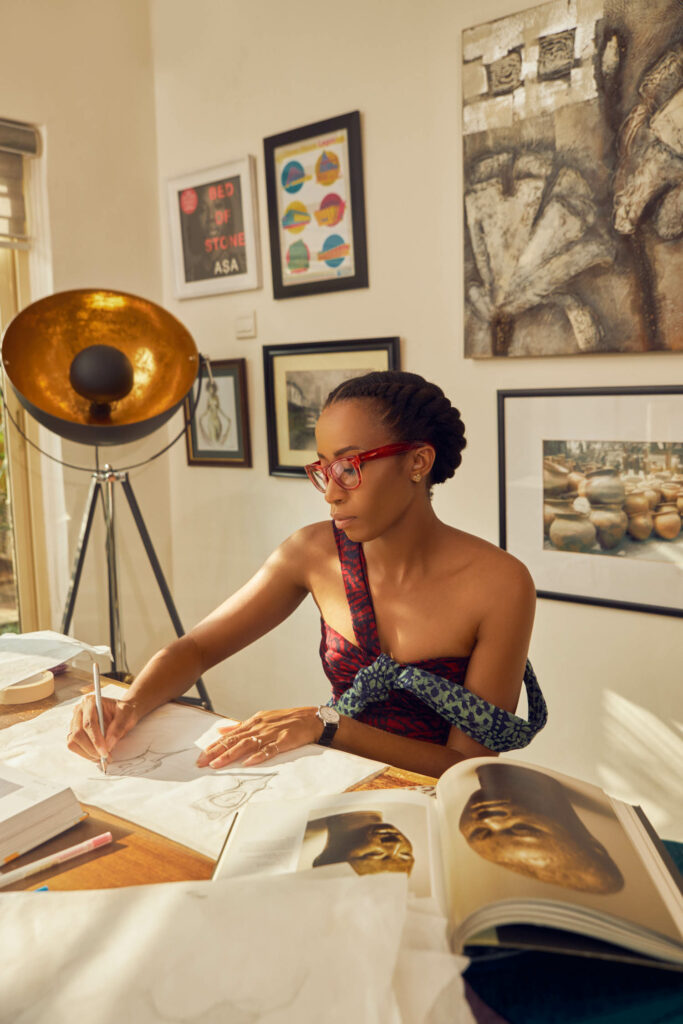

Interior Design speaks with Oshinowo about her career, humanitarian efforts, and more.
Tosin Oshinowo Talks Culture and Design
Interior Design: Can you take me on a journey through your career?
Tosin Oshinowo: I’m very fortunate to say that what I wanted to do as a little girl is what I’ve done. It’s not common that people get to follow their childhood dreams. I’ve always wanted to be an architect. I was a creative child, I enjoyed technical drawings; my father was having his house built when I was 12 and I was very much interested in the process. It was like a very natural progression for me. I remember I was able to read the floor plans when they were sketched and I even got to design the terrazzo floor in the building, which is something I’m currently doing again in the process of refurbishing my parent’s house now that they are retired.
I have a bachelor’s of science in architecture from Kingston University, which was my first degree. I remember finishing that and I was a bit confused. I wasn’t sure if I really wanted to be an architect because leaving Nigeria, going to a foreign place only to learn about Georgian terraces and Victorian buildings wasn’t correlating. I was finding it hard to position myself in what I was being taught. So I found a course at University College London, which was called urban design and development; it was about designs for developing country cities and I remember thinking it was what I needed because it had building studies of Lagos. I needed something that could help me to position myself in an academic setting of where I’m from. And to be honest, it was God sent because I didn’t learn history in secondary school in Nigeria.
I was very keen. I learned about the history of Nigeria, history of Lagos as a city—our urbanism, our culture, our economics. Doing that course and then relating it with design helped me to find my grounding as a person. I needed that. I needed to be able to carve an identity for myself. When you’re a designer, you have to come from a place of centering. This is my positioning, and this is how I’m going to address these challenges and because I didn’t have that, I was uncomfortable. Once I was able to get that grounding, I felt more confident.
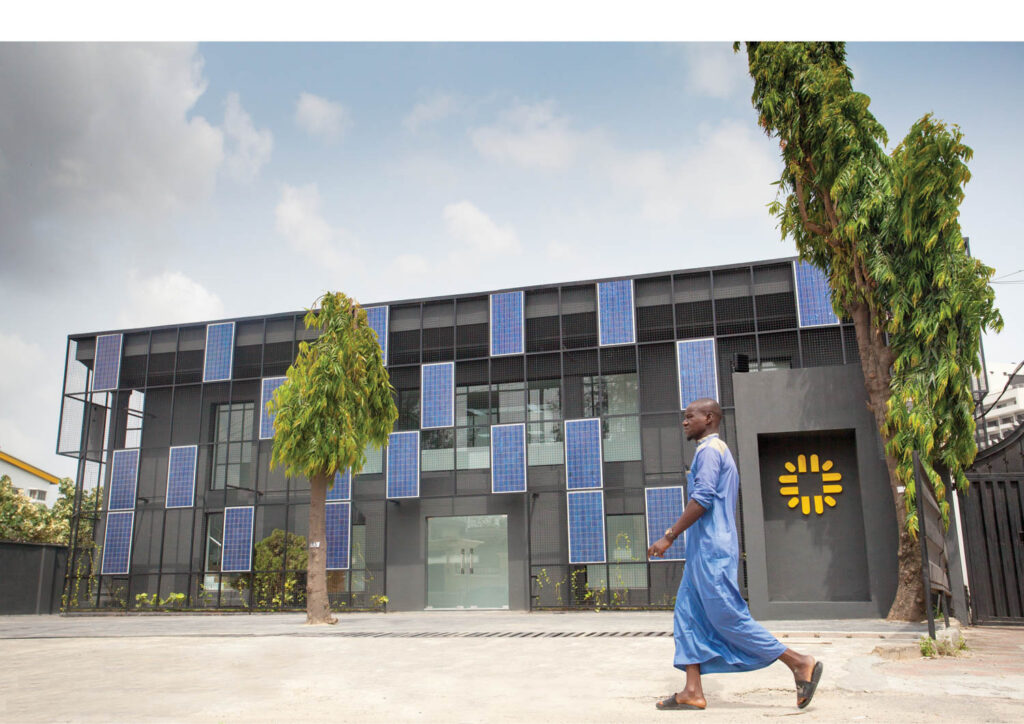

ID: What is it like working as an architect in Nigeria?
TO: I worked for a short period in London for the London arm of Skidmore, Owings & Merrill. Then in Rotterdam, I worked for a slightly longer period at the Office of Metropolitan Architecture. After that, I came back to Nigeria and worked at James Cubitt Architects. I had quite a bit of apprenticeship as a professional before I set up my practice. And then in practice, I realized I was struggling with understanding business. I finished a masters in business for architecture and design at a school in Montreal. A lot of the skills I was learning were more business-related skills: how to write a business plan, how to be able to better negotiate fees, how to understand your client better, do you need to be able to give them better value for money, how to deal with your HR requirements for a practice, things that you need when you’re running a business that you don’t learn in design schools. Everything that I’ve done, I’m using.
Coming back to Nigeria wasn’t unexpected. I left at 16 and even if you come on holiday, it’s not the same. Also, the culture of being a child and being in secondary school is very different from the culture of being in an office. I had to learn the culture of an office. I remember at the beginning, I couldn’t understand why some people were mean to me but I think it’s important to understand the culture and the ethics of a location when being new to an environment… Remember, I didn’t go to university here, so I didn’t have a network. I had to meet people. I really invested myself in meeting and engaging in whatever architects were doing. I was very present.
ID: How did you come up with the concept “Afro Minimalism”?
TO: I’m a child of modernism. Those principles also created tropical modernism, which is what I saw growing up in the ’80s and stuck with me in my subconscious. Now, from modernism, you have minimalism. It’s modernistic, but it’s very clean. It’s very plain. It’s very simple. It’s very about light and plain materiality, using materials in their natural state. That’s where I find myself most at home as a designer. I came up with the term Afro Minimalism because I believe it’s important to associate your aesthetic with your identity. In my case, I’m very conscious that I localize my design. It’s not that you’re going to see something Afro in it but the point is, it has been localized to our context, our use of space. It’s our traditional way of trying to live. One has to take into context one’s culture when designing spaces.
Here, you don’t design things that will require high maintenance. That’s why we use brick unlike in some western countries that use wood. Or very hard working materials like granite and stone, because the reality is our maintenance culture is quite poor. As a designer, you need to be aware and design accordingly. In Nigeria, if you design a building, you have to think very consciously about passive infrastructure: generators, solar panels, water treatment plants. These are all things that if you’re working anywhere else in the world or in the west or in the global north, you are plugging into an existing infrastructure. You have to create a mini island for yourself in every single project.
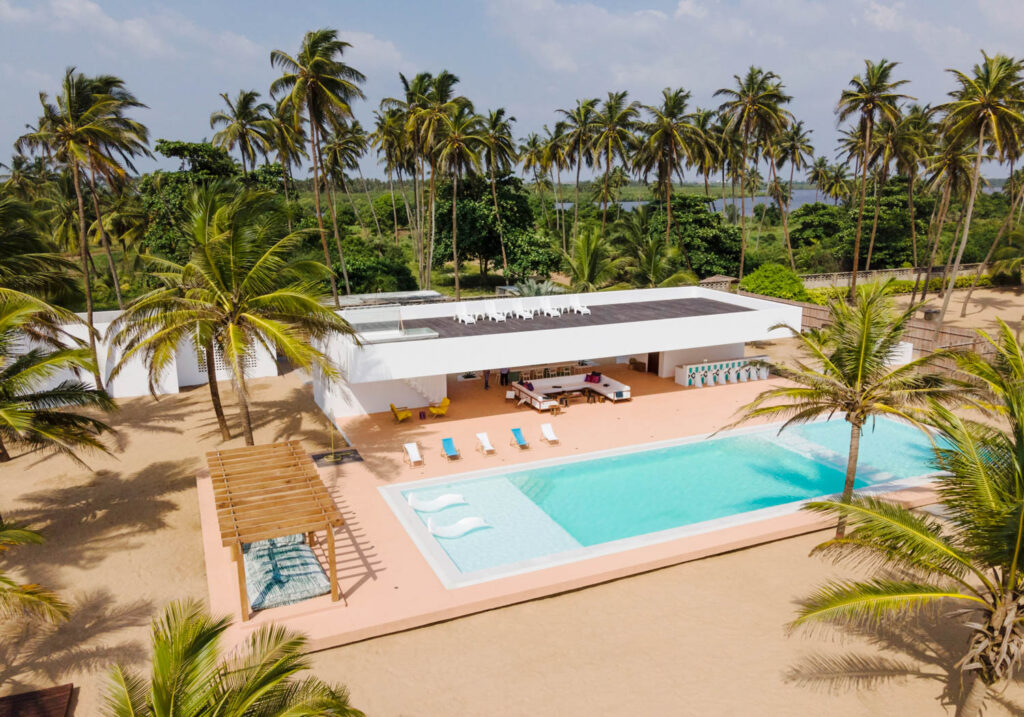

ID: What is the success story behind CM Design Atelier?
TO: I wasn’t doing exciting architecture. I felt like I was doing bungalow housing. It was a project that was paying the office very well, but it wasn’t design work. I started to get very conscious. I started to get restless. I was very aware I wasn’t using the skills that I had been trained for so I started to look for opportunities. I remember being introduced to two brothers and they had a brand they had just started and were looking for someone to design a coffee shop. They gave me a logo and said, “Oh, we’re thinking of a young urban Nigerian who has been abroad and likes coffee and would like to come home and drink coffee.” I was able to come up with an aesthetic language. They were my first clients. We did about six jobs for them.
I started to see “Oh, this could work. I could use these skills.” But I wasn’t sure if it was going to work or not because I don’t know anybody else my age, as a woman, who had her own practice in Nigeria. But once you get one or two things and you start to get referrals, you realize there’s something here. My voice was fresh in the industry. I wasn’t using any expensive, important materials. I was working contextually. I was working with what I was finding and coming up with a very clear, conscious design. Being considerate and aware of the environment you’re working in. That was it. I started [the business] in the guest bedroom in my house by myself.
We’re eight all together now. I’ve always wanted a boutique firm. I never wanted it to be too large because when you work in Nigeria, you need to be careful. When any economy is going to tank, the first industry that is affected is construction. To ensure that we’re able to spread our risk, I’ve always tried to keep a compact, efficient team. It’s a model that we will still use moving forward. But we’ve been very fortunate—we’ve always had work and we’re busy.
ID: You worked on the Ngarannam project to create relief homes for people displaced by Boko Haram. Can you share more about it?
TO: This was a very interesting journey for me—to understand the culture, to understand the people. The idea of a country is a very modern construct. All these borderlands that they draw don’t really exist. People, particularly in the Sahel region, moved around a lot from the Fulani to the Kanuri. These people move.
It was such an honor to work on that project for the United Nations and to be able to go in and speak with the community, speak with the government, and come up with a proposal that would be fitting to help them to rebuild their lives. I remember the day that I went to tell them that construction had started and they clapped for me. I was wearing sunglasses. I had tears in my eyes because I was so honored to be able to use my skills for such good. To think that the labor of my hands could add value to somebody’s life, I felt very honored and very privileged. It was a very humbling experience.
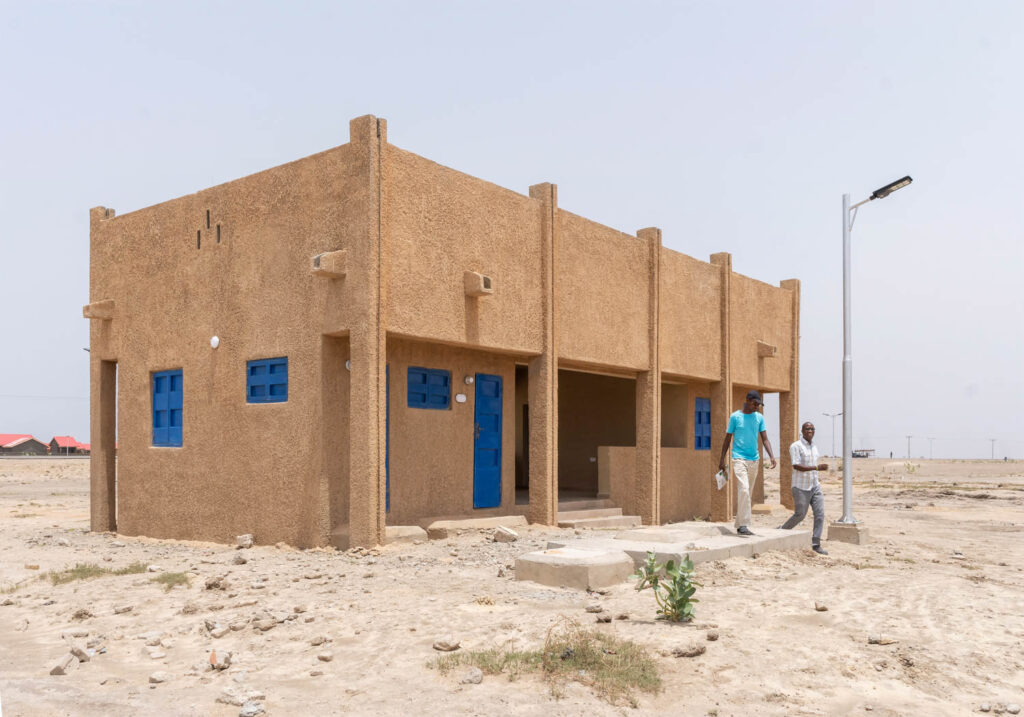

ID: How did the idea emerge for the Ile-ila lifestyle brand?
TO: Ile-ila has been such a beautiful journey. Again, one based on a discovery of identity. Ile-ila really started as a pet project. In Nigeria, we have a very simplistic manufacturing industry. When you do projects, you do a lot of things where you deal directly with carpenters, which is great because you have so much freedom to be able to create from scratch. But the problem with creating from scratch in Nigeria is quality control. I started to look at this idea of, why do we always have challenges of quality in this context?
I had been experimenting with Aso oke [a hand-woven cloth created by Yoruba people in west Africa]. I actually discovered it from a friend who has a bag line. I started thinking about the idea of using it on chairs. I asked her and she gave me the details of the person who used to supply her the Aso oke. So this guy comes to my house and he brings all these different samples. I’m like “Oh, this thing looks interesting. I’ve seen this fabric before.” When I got married, I was given fabric. They said it belonged to my ex-husband’s mother, so they just gave it to me. When the man saw the fabric, he told me it was over 100 years old. I was really shocked. It’s a generational material. I’ve kept it so I will pass it down to my daughter.
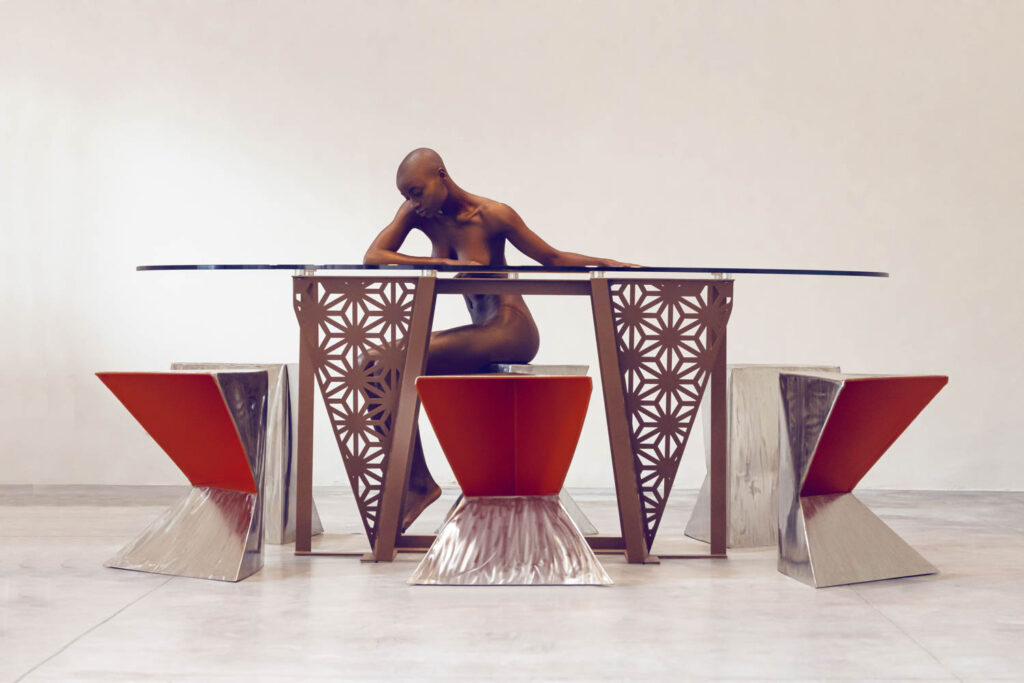

ID: Why is it important to weave Yoruba culture into your designs?
TO: So much of our history is encapsulated in the Aso oke fabrics. When I started to buy this vintage Aso oke, my mom would say things like “I remember when my mom used to wear this.” Then there’s a thread that was a reigning pattern for the ’80s, for the ’90s, so you can actually chronicle our history in these threads and these fabrics. There’s something very beautiful about it. It’s so poetic. That was where the journey of Ile-ila started. Looking at Aso oke, not just as a dress ready for special occasions but to look at another way to create and preserve this history in an object that can stay in the open. That was where it started from. What’s great about Ile-ila is it allows me to use another side of myself to design. Because my buildings are very simple and clean, there’s more of a focus on the objects that go inside them. And so Ile-ila gave me the opportunity to balance that cleanness with a burst of color.
ID: What do you think of the A&D industry in Africa at large?
TO: I think there is a generation of practitioners who are pushing boundaries. I don’t think there was a lot of exciting architecture that came out in the ’90s. Maybe things started to change but there is a crop of people who are doing exceptional work that is helping the next generation of architects to see what the possibilities are. I think the people of the ’80s and the ’90s had it very easy or maybe because the economy was very bad, they didn’t have anything at all. There were a few big people but I don’t think they put the profession in a good place. We are building this from scratch. I know I’m very fortunate to be the one that the light bulb is shining on but a lot of people are doing so much good work and it means that the quality of the work is improving. There is no point being a big fish in a small pond, it’s much better when you are building and the industry is growing and being robust.
ID: What challenges have you faced as a designer in Nigeria?
TO: You have to understand how Nigeria works. A few years ago I would have probably said “I’m frustrated,” but I think what I’ve found quite refreshing is that it’s the limitation that is actually my greatest creativity. When you realize something is not working, you have to be innovative. Now I find it to be a blessing. As an architect, I have never worked in abundance, I don’t have the kind of client who has all the money to import things. I have people who are exposed but don’t have the deepest of pockets, I had to learn to be innovative to be able to produce the right designs for my clients and for the work I want to be known for but within the limitation of materials available in this environment.
ID: In November, you will be curating the Sharjah Architecture Triennale. How are you preparing for the moment?
TO: I’m very much in the preparation stages of the exhibition, it’s so exciting. I’ve met so many people doing amazing work around conditions of scarcity across the world, it really opened my eyes to the possibilities. I’m looking forward to putting on a really beautiful exhibition that showcases some really interesting innovative and alternative ways of doing things.
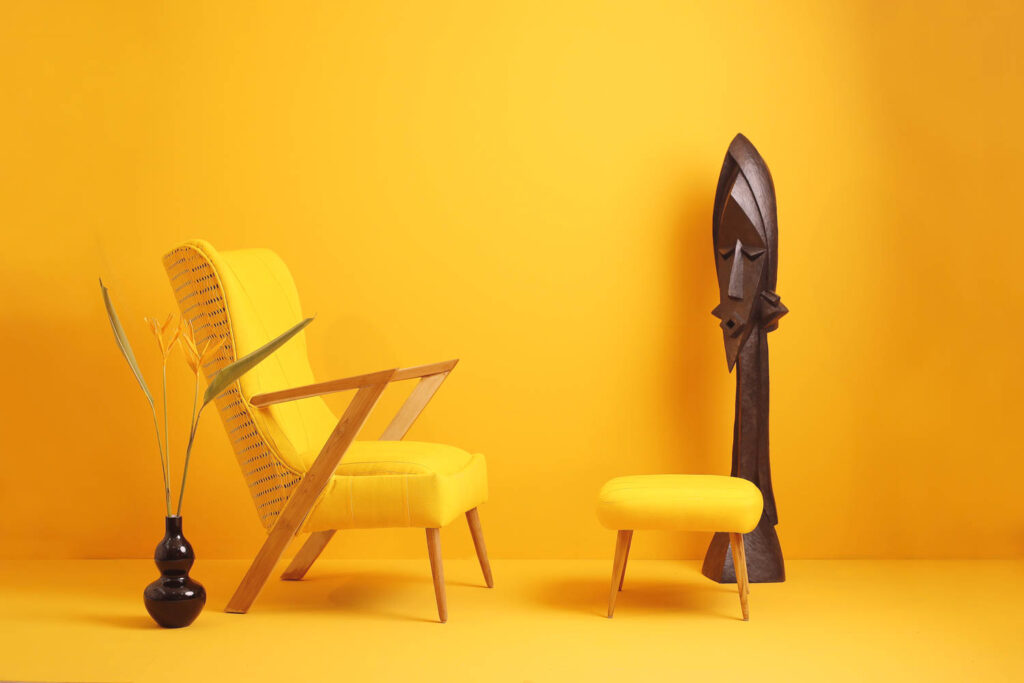

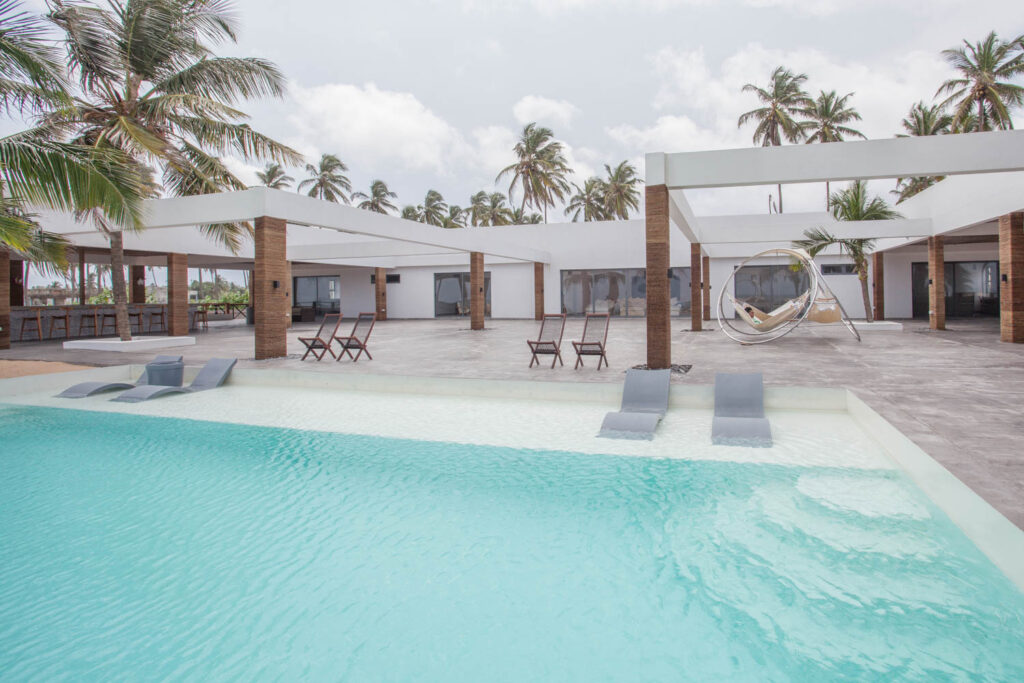

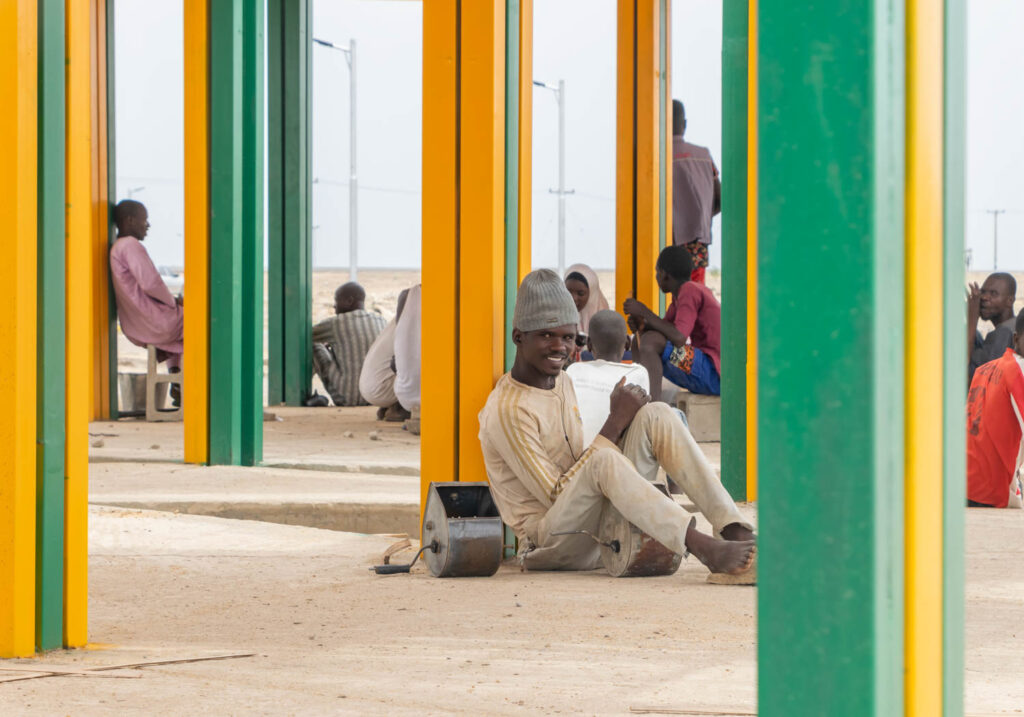




read more
DesignWire
Tosin Oshinowo and Chrissa Amuah Launch Collection of Conceptual Headpieces
COVID-19 has turned the mask into a must-have accessory in the West. But face coverings have long been a form of expression in Africa. Freedom to Move, a collection of conceptual headpieces launched in December as a…
DesignWire
10 Questions With… Titi Ogufere, Founder of Design Week Lagos
Here, multi-hyphenate Titi Ogufere shares with Interior Design the beginnings of Design Week Lagos, insights into African design traditions, and hints at the future of her project with Netflix.
DesignWire
Nifemi Marcus-Bello Celebrates Ancient African Practices in His First U.S Exhibition
In his first U.S. exhibition, Nifemi Marcus-Bello showcases African design through bronze benches and a sound installation that features his mother’s voice.
recent stories
DesignWire
10 Questions With… Sculptor Adam Birch
South African sculptor Adam Birch shapes curvy, functional forms from natural materials including trees, bones, and driftwood.
DesignWire
Celebrate 40 Years Of Hall Of Fame With 2024 Inductees
This year, Interior Design’s Hall of Fame turns 40, which makes for an extra celebratory evening. See who will be honored as 2024 inductees.
DesignWire
Designers Share How To Boost Chances Of Winning A Best of Year Award
What does it take to win an Interior Design Best of Year Award? Past winners and honorees spill their secrets about crafting top submissions.

